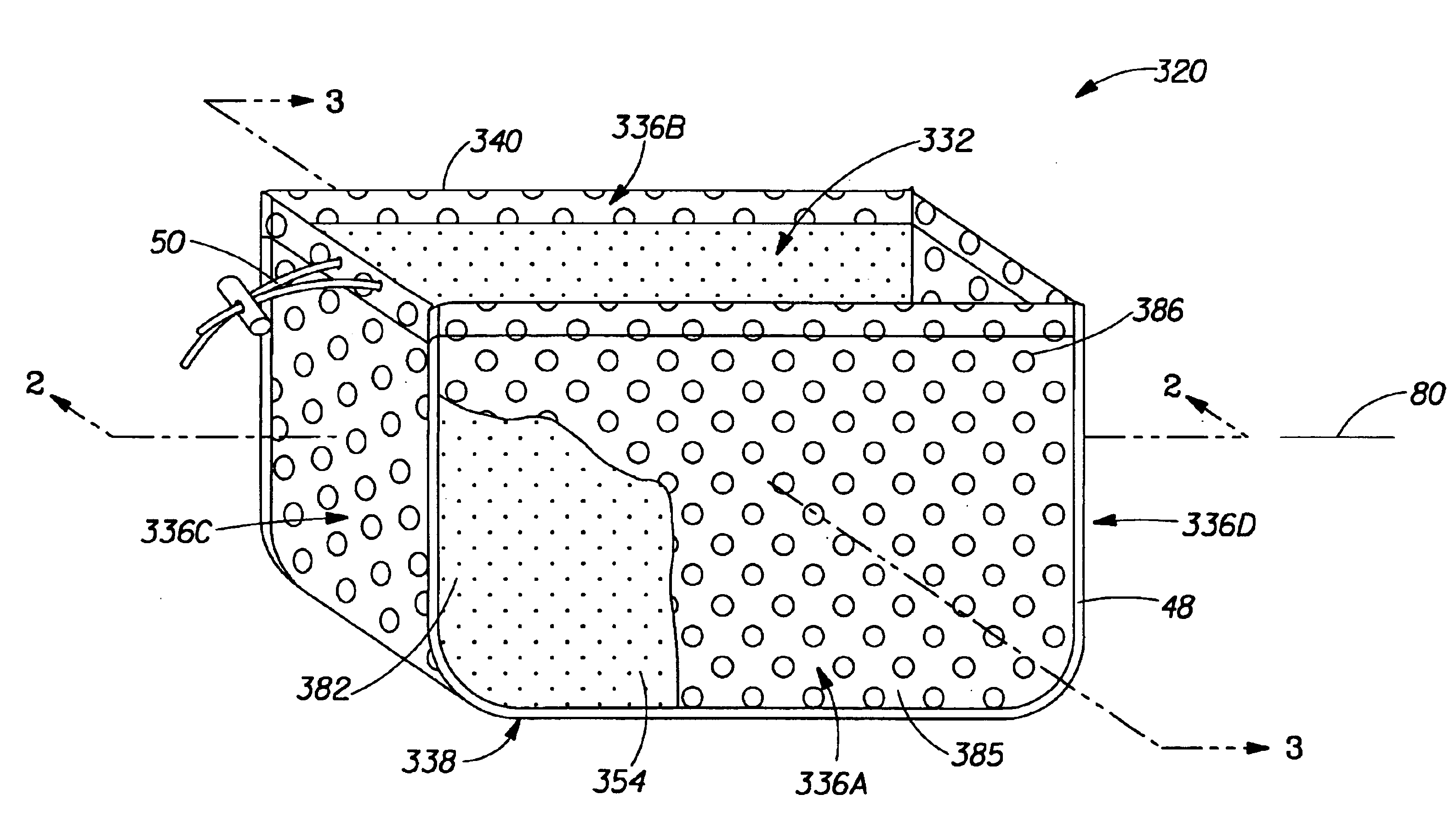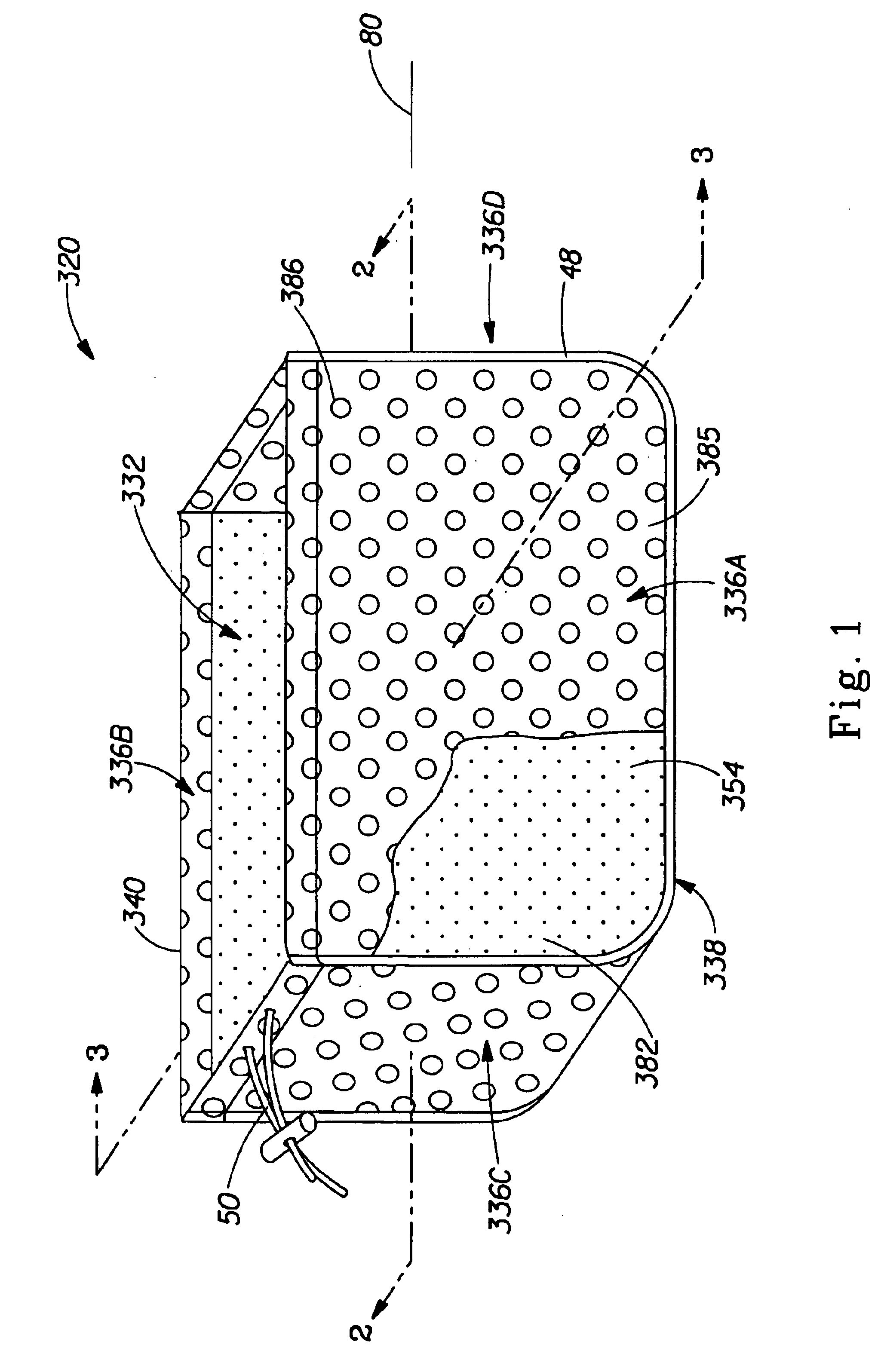Compositions for pre-treating shoes and methods and articles employing same
- Summary
- Abstract
- Description
- Claims
- Application Information
AI Technical Summary
Benefits of technology
Problems solved by technology
Method used
Image
Examples
example 1
Spray On
ComponentABCDPolymeric release agent1 2.5% 2.5% 2.5% 1%Surfactant2— 3% 3% 0.5%Softening agent3— 1% 1%—Substantive perfume—— 1%—Ethanol 50%Disinfectant——— 0.5%Water97.5%93.5%92.5% 48%TOTAL 100% 100% 100% 100%1A suitable polymeric release agent is Carboxymethylcellulose available from Hercules, Type 7LF. 2A suitable surfactant is Neodol 23-9 available from Shell Chemicals. 3Asuitable softening agent is DOWNY ® April Fresh Regular concentration fabric softener sold by The Procter & Gamble Company of Cincinnati, Ohio, USA, and described in one or both of U.S. Pat. Nos. 4,424,134 and 4,767,547.
example 2
Through the Rinse
In this Example, rather than spraying a pre-wear treating composition onto the shoes, the treating composition is applied to the shoes when the shoes are washed. In one non-limiting embodiment, the treating composition is applied during the rinse cycle when the shoes are washed in a washing machine.
The treating composition can be added in any suitable concentration during the washing process. In one non-limiting embodiment, the treating composition in the form of carboxymethylcellulose is provided in a concentration of about 2,000-2,500 ppm in the rinse water during the rinse cycle. In order to perform its treating function in the washing process, a more active sample of carboxymethylcellulose is used than in the case of the first Example where the treating composition is sprayed directly onto the shoes. In one non-limiting variation of this example, a 30% active sample of carboxymethylcellulose from Penn Carbose, Inc. can be used. The carboxymethylcellulose can be ...
example 3
A cleaning agent-containing treating composition useful with the present invention, which has a whitening agent therein, can be formulated as follows:
% Active MaterialExample AExample BExample CAcrylic Acid / Maleic Acid26.226.829.4Copolymer (1)Nonionic surfactant (2)12.612.811.6Tween 2012.612.80.0Sodium Citrate1.71.70.0Sodium Hydroxide0.80.80.8Silicone suds suppresser0.30.30.3Glycerin0.00.02.02,2,4-Trimethyl-1,3-0.00.01.0PropanediolThickening agent (3)0.00.00.2Minors (dye, perfume,222preservative, stabilizers)Protease (4)0.080.00.08Fluorescent whitening agent0.20.20.2(5)Water43.542.652.4(1) Commercially available under the trade name SOKALAN CP-5 (40% active) from BASF. (2) Commercially available under the trade name Neodol 23-9 from Shell Chemical Co. (3) Trihydroxystearin. (4) Protease is typically a mixture containing 34 mg / mL active protease. (5) A suitable fluorescent whitening agent is commercially available under the trade name of Optiblanc LSN from 3V, Inc.
PUM
| Property | Measurement | Unit |
|---|---|---|
| Fraction | aaaaa | aaaaa |
| Fraction | aaaaa | aaaaa |
| Fraction | aaaaa | aaaaa |
Abstract
Description
Claims
Application Information
 Login to View More
Login to View More - R&D
- Intellectual Property
- Life Sciences
- Materials
- Tech Scout
- Unparalleled Data Quality
- Higher Quality Content
- 60% Fewer Hallucinations
Browse by: Latest US Patents, China's latest patents, Technical Efficacy Thesaurus, Application Domain, Technology Topic, Popular Technical Reports.
© 2025 PatSnap. All rights reserved.Legal|Privacy policy|Modern Slavery Act Transparency Statement|Sitemap|About US| Contact US: help@patsnap.com



